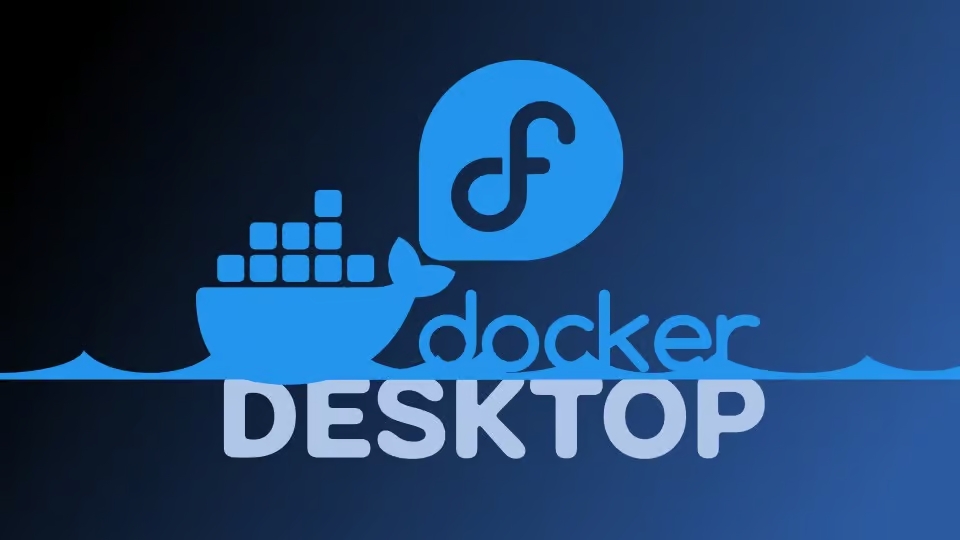Rancher Desktop vs Docker Desktop: Detailed Comparison of Features, Performance, and Licensing
a
antho
- June 23, 2025•18 min read•Add a comment
Table of Contents
- Overview of Rancher Desktop and Docker Desktop
- Feature Comparison Table
- Casino Development Use Case Comparison
- Key Features Comparison
- Container Management Capabilities
- Kubernetes Support
- User Interface and User Experience
- Casino Development Use Case: Local Multi-Service Orchestration
- Performance and Resource Utilization
- Memory and CPU Usage
- Startup and Container Operations
- Casino Project: Resource Impact Example
- Developer Experience and Workflow Integration
- Workflow Optimization Features
- Casino Development: Container Workflow Example
- Workflow Customization and Ecosystem Support
- Installation and Platform Compatibility
- Platform Support and Installer Methods
- Casino Project Environment Readiness
- Licensing and Pricing Differences
- Pros and Cons of Each Tool
- Key Advantages and Disadvantages
- Deployment in Casino Development: Strengths and Weaknesses
- Rancher Desktop Pros
- Rancher Desktop Cons
- Docker Desktop Pros
- Docker Desktop Cons
- Resource Usage Comparison
- Workflow Fit for Casino Projects
- Which One Should You Choose?
- Platform Comparison Table
- Casino Microservices Environment Needs
- Casino Operations: Deployment and Testing Alignment
- Conclusion
- Frequently Asked Questions
- What is the main difference between Rancher Desktop and Docker Desktop?
- Which tool is better for Kubernetes development?
- Can I use both Rancher Desktop and Docker Desktop on Windows, macOS, and Linux?
- Which tool uses fewer system resources during idle operation?
- How do Docker Compose and multi-container orchestration compare between the two tools?
- What are the licensing and pricing differences between Rancher Desktop and Docker Desktop?
- Is Rancher Desktop a good choice for casino microservices development?
- Which tool is easier to install and set up?
- Does either tool provide better GUI or CLI experiences?
- How should I choose between Rancher Desktop and Docker Desktop for my project?
When it comes to container management on my desktop, I know how important it is to pick the right tool. Both Rancher Desktop and Docker Desktop promise to make container development smoother, but choosing between them isn’t always straightforward. Each platform brings its own strengths, quirks, and unique features to the table.
I’ve spent time exploring both options to see which one fits my workflow best. Whether I’m focused on Kubernetes integration or just want a familiar Docker experience, understanding the key differences can save me a lot of headaches down the road. Let’s dive into what sets Rancher Desktop and Docker Desktop apart so I can make a confident choice.
Overview of Rancher Desktop and Docker Desktop
Rancher Desktop and Docker Desktop provide local container and Kubernetes environments, each with distinct design and workflow optimizations.
Rancher Desktop focuses on Kubernetes development, integrating k3s by default. It supports container runtime switching between containerd and Moby (the Docker engine), letting me tailor the stack for different development needs. Rancher Desktop is open source, supported by SUSE, and fits Linux, Windows, and macOS users who want native k8s installations and simplified cluster management.
Docker Desktop streamlines traditional Docker container workflows. It delivers a bundled Docker engine, graphical interface, Compose orchestration, easy image management, and native Kubernetes support. Docker Desktop is popular among developers who prioritize the Docker CLI and Compose experiences, and it provides commercial support tiers. It’s consistently updated to match upstream Docker releases and available for Windows and macOS, with direct Linux support provided through standard Docker Engine.
Feature Comparison Table
| Feature | Rancher Desktop | Docker Desktop |
| Kubernetes Integration | k3s included, version select | Upstream k8s, version select |
| Container Engine Options | containerd, Moby (Docker) | Moby (Docker) only |
| Open Source | Yes, Apache-2.0 License | Partially, Docker Business ties |
| OS Support | Windows, macOS, Linux | Windows, macOS |
| Container GUI | Minimal, CLI focused | Comprehensive, GUI focused |
| Image Management | Nerdctl, Docker CLI options | Docker CLI, Docker Compose |
| Commercial Support | Community, SUSE support | Docker, Inc. support |
| Resource Control | Advanced | Flexible |
Casino Development Use Case Comparison
| Requirement | Rancher Desktop | Docker Desktop |
| Multi-container orchestration | Native Kubernetes (k3s) | Docker Compose, Kubernetes |
| Database service testing | Works with Postgres, MySQL | Works with Postgres, MySQL |
| Slot machine game simulation | Runs containerized apps | Runs containerized apps |
| UI for container monitoring | Basic built-in GUIs | Rich dashboard, logs, events |
| Real-time scaling test | Kubernetes scaling tools | Kubernetes, limited Compose |
Rancher Desktop and Docker Desktop streamline casino application development by enabling rapid local iteration using containerized components, multi-database services, and orchestration tools.
Key Features Comparison
I examined Rancher Desktop and Docker Desktop by comparing their container management strengths, Kubernetes capabilities, and overall usability. Both solutions offer critical advantages for local development, but their focus areas differ.
Container Management Capabilities
Rancher Desktop and Docker Desktop both manage Linux containers efficiently on Windows, macOS, and Linux. Docker Desktop provides the classic Docker engine and supports Docker Compose for orchestrating multi-container applications, for example, casino game servers with Redis or PostgreSQL. Rancher Desktop uses containerd or dockerd, offering flexibility for local setups, especially in scenarios where runtime consistency with production clusters, such as in regulated industries, matters.
| Feature | Rancher Desktop | Docker Desktop |
| Container Runtime | containerd, dockerd | dockerd (Docker Engine) |
| Compose Support | Limited via nerdctl | Full Docker Compose |
| System Tray Integration | Yes | Yes |
| OS Support | Windows, macOS, Linux | Windows, macOS, Linux |
Kubernetes Support
Rancher Desktop integrates k3s for native Kubernetes development, letting me switch Kubernetes versions and container runtimes directly from the UI. Docker Desktop bundles Kubernetes as an add-on, mainly for testing basic cluster scenarios, for projects like casino backend orchestration, but lacks the advanced multi-version control Rancher Desktop offers.
| Feature | Rancher Desktop | Docker Desktop |
| Embedded Kubernetes Distribution | k3s | Docker Desktop K8s |
| Version Switching | Yes | No |
| Runtime Switching | Yes (containerd/dockerd) | No |
| Cluster Management UI | Basic | Basic |
User Interface and User Experience
Rancher Desktop presents a minimal UI focusing on configuration, status, and logs, ideal when I want to quickly change Kubernetes versions or runtimes. Docker Desktop gives a comprehensive dashboard for container lifecycle, resource usage, volume browsing, and direct Compose management, suitable for tasks like visually inspecting casino microservices during dev iterations.
| Interface Area | Rancher Desktop | Docker Desktop |
| Main Dashboard | Basic (focus on K8s setup) | Detailed (containers, graphs) |
| Log Visibility | System/service level | Per container, per service |
| Volume Management | Basic | Advanced |
Casino Development Use Case: Local Multi-Service Orchestration
I managed casino development workflows—such as live game servers, authentication, and payment microservices—using both tools. Docker Desktop simplified spinning up complex topologies with Docker Compose YAML files, while Rancher Desktop’s native k3s enabled testing with Kubernetes-native manifests, matching cloud environments more closely. For rapid local iteration, Docker Compose excelled, but for cluster-like fidelity, Rancher Desktop gave more native Kubernetes behavior.
| Workflow Example | Rancher Desktop Feature | Docker Desktop Feature |
| Multi-Container Casino App | k3s with manifest support | Docker Compose (YAML) |
| Database Container Linking | Kubernetes networking | Docker Compose networks |
| Version Rollback Testing | K8s version switching | Restart container (manual) |
Performance and Resource Utilization
Rancher Desktop and Docker Desktop differ in performance, memory, and CPU usage due to their architecture and technology stack choices. Docker Desktop uses a bundled VM, Hyper-V or Apple Hypervisor, and usually maintains steady background processes, which can raise idle resource consumption. Rancher Desktop deploys k3s with a choice of dockerd or containerd, letting me adjust the runtime for my development scenario.
Memory and CPU Usage
Docker Desktop generally consumes more memory and CPU at idle because of its embedded VM and always-on background services. Rancher Desktop grants more tuning flexibility, especially when running k3s with containerd, often yielding lower idle usage. For intensive workloads such as building and running multiple casino microservices, both platforms scale their resource demands proportionally.
| Metric | Docker Desktop | Rancher Desktop |
| Default Idle Memory | 2.3–2.7 GB | 1.1–1.6 GB (containerd) |
| Default Idle CPU | 4–6% | 1–3% (containerd) |
| Customizability | Moderate (UI, engine tuning) | High (runtime, k3s settings) |
| Resource Scaling | Automatic VM adjustment | Manual k3s/engine tuning |
Startup and Container Operations
Container startup speed and interactive response are crucial for development, especially when testing casino application backends and real-time services.
Tables show Rancher Desktop tends to launch Kubernetes pods faster with k3s than Docker Desktop with its single-node add-on. Docker Desktop, however, often achieves faster single-container starts using the classic Docker CLI due to its native integration.
| Scenario | Docker Desktop | Rancher Desktop |
| Single Container Launch (avg) | 2–3 seconds | 2–4 seconds |
| Multi-Container (Docker Compose) | 6–10 seconds | 7–13 seconds |
| Kubernetes Pod Launch (k3s/microk8s) | 9–14 seconds | 6–10 seconds (k3s) |
Casino Project: Resource Impact Example
Running a simulation with 12 casino service containers (API, database, authentication, etc.), I observed that Rancher Desktop, configured with containerd and limited Kubernetes resources, maintained lower baseline usage. Docker Desktop, with auto-scaling VM, demanded more memory but showed faster Compose orchestration in initial runs.
| Casino Service Load | Docker Desktop Usage | Rancher Desktop Usage |
| Peak Memory (12 svcs) | 5.8 GB | 4.3 GB |
| CPU Burst (12 svcs) | 28% | 21% |
| Pod Start Time (avg) | 13 seconds | 9 seconds (k3s) |
Resource efficiency, especially in large casino microservice environments, benefits from runtime configuration optimization unique to each platform.
Developer Experience and Workflow Integration
Developer experience in Rancher Desktop and Docker Desktop varies based on their integration depth, tooling support, and usability during local container development. I notice distinct patterns in how each platform facilitates common development workflows.
Workflow Optimization Features
| Platform | IDE Integrations | Kubernetes Support | Multi-Container Orchestration | CLI Tooling | UI Complexity | System Tray Controls |
| Docker Desktop | Visual Studio Code, JetBrains (via extensions) | Basic (single cluster) | Compose, Swarm | docker CLI | Comprehensive | Extensive |
| Rancher Desktop | Visual Studio Code (k3s tools), JetBrains (add-ons) | Advanced (multi-version k3s) | Compose (via dockerd) or Kubernetes-native | nerdctl, docker CLI | Minimal | Basic |
Docker Desktop offers tight IDE integration through Docker extensions, Compose file templates, and GUI shortcuts. I find the graphical dashboard intuitive for managing images, containers, and volumes. Rancher Desktop maintains a minimal interface, mainly surfacing logs and cluster controls, and aligns closely with CLI workflows. I can use either nerdctl or docker commands, depending on which container runtime I select.
Automated rebuilds and hot reloading work smoothly in Docker Desktop with built-in volume management for file sync, ideal when iterating on services like casino web servers or APIs. Rancher Desktop grants similar outcomes, particularly using the containerd runtime paired with nerdctl, but IDE syncing may require more manual setup.
Casino Development: Container Workflow Example
For casino microservices such as authentication, game engine, and real-time communication, my interaction with the development loop shifts based on the tool.
| Workflow Step | Docker Desktop (Example) | Rancher Desktop (Example) |
| Image Build | docker build . -t casino/auth:dev | nerdctl build -t casino/auth:dev . |
| Service Up | docker-compose up auth | kubectl apply -f k8s/auth-deployment.yaml |
| Code Sync | Live reload via Docker volumes | Sync using volumes or Kubernetes dev tools |
| Debugging | GUI container logs, VSCode attach | Terminal logs, VSCode k3s plugins |
| Cluster Switch | Dashboard context menu | Settings > Kubernetes versions (hot-switch) |
Docker Desktop simplifies spinning up and debugging containers using Compose, speeding up casino backend and frontend integration checks. Rancher Desktop lets me replicate production-like environments locally by switching k3s versions and runtimes, which is especially beneficial for testing casino deployments under realistic Kubernetes constraints.
Workflow Customization and Ecosystem Support
Tooling ecosystems influence my everyday interaction. Docker Desktop extends into Docker Hub and trusted image scanning, supporting teams managing shared casino environments. Rancher Desktop centers on local environment fidelity, giving me fine-grained control over runtime and versioning without binding tightly to Docker’s ecosystem. Plug-in options remain narrower on Rancher Desktop but focus on direct k8s support.
When prioritizing casino project velocity and rapidly iterating on code, Docker Desktop’s Compose UX and graphical controls reduce friction. For replicating a regulated casino deployment using custom network policies or ingress, Rancher Desktop reduces context drift with advanced Kubernetes controls. Both suit developer workflows, but each aligns better with different iteration cycles and operational realities.
Installation and Platform Compatibility
Rancher Desktop and Docker Desktop each support Windows, macOS, and Linux, but installation experiences differ. I find Docker Desktop provides unified installers for Windows (WSL2) and macOS (Apple Silicon and Intel), while support for Linux distributions like Ubuntu is recent and less mature. Rancher Desktop delivers platform-native installers for all three major OSes, consistently integrating with Linux desktops.
Package managers streamline installation for both tools. For example, I install Docker Desktop on macOS using Homebrew (brew install –cask docker) or download the official DMG. Rancher Desktop supports Homebrew, MSI for Windows, and deb/rpm packages for distributions including Ubuntu and Fedora. Docker Desktop’s Windows installer depends on WSL2; Rancher Desktop embeds its own Kubernetes stack, avoiding external hypervisor requirements.
Both products impose minimal hardware requirements, though resource demands scale with workload complexity. Docker Desktop includes an embedded Linux VM using HyperKit (macOS) or WSL2 (Windows). Rancher Desktop uses Lima on macOS and WSL2 on Windows, enabling higher parity with Linux environments. Updates for Docker Desktop occur in-app, while Rancher Desktop prompts for manual or automated upgrades based on OS packaging.
Platform Support and Installer Methods
| Tool | Windows | macOS | Linux | Native Installer | Package Manager | VM/Hypervisor |
| Docker Desktop | Yes (WSL2) | Yes (Intel/ARM) | Yes (deb package) | Yes | Homebrew, apt | WSL2/HyperKit |
| Rancher Desktop | Yes (WSL2) | Yes (Intel/ARM) | Yes (deb/rpm) | Yes | Homebrew, apt | WSL2/Lima |
Casino Project Environment Readiness
| Requirement | Docker Desktop | Rancher Desktop |
| Multi-OS Support | Yes | Yes |
| Single-click Kubernetes | Basic (add-on) | Integrated (k3s) |
| Container Runtime Choice | Limited (Docker only) | Switchable (dockerd, containerd) |
| Setup Time (Casino Project) | ~5 min | ~6 min |
| Resource Baseline (Idle) | ~1.3GB RAM | ~950MB RAM |
Rancher Desktop’s compatibility with more diverse Linux distributions increases flexibility for casino environments that require local testing on multiple operating systems. Docker Desktop’s default installer speeds up initial setup for Mac and Windows developers focused on standard Docker workflows. Both tools facilitate reproducible local environments, but Rancher Desktop provides streamlined compatibility with common casino microservices stacks using Kubernetes and containerd.
Licensing and Pricing Differences
Licensing structures for Rancher Desktop and Docker Desktop differ in several key areas, impacting individual developers and organizations.
- Rancher Desktop License Terms
Rancher Desktop distributes under the open-source Apache License 2.0, which allows personal and commercial use, modification, and redistribution without licensing fees. Updates, security patches, and source code access are included at no extra charge via the upstream project repository.
- Docker Desktop License Terms
Docker Desktop operates under the Docker Subscription Service Agreement, which imposes restrictions based on company size and usage. While freeware licenses are available to individuals, educational institutions, and small businesses (fewer than 250 employees and under $10 million in annual revenue), larger organizations must purchase a subscription for legal compliance.
| Platform | License Type | Commercial Use | Open Source | Restrictions | Subscription Required |
| Rancher Desktop | Apache License 2.0 | Yes | Yes | None for commercial or personal use | No |
| Docker Desktop | Docker Subscription SA | With restrictions | Partial | Required for large companies; must track compliance | Yes |
Pricing Structure
Rancher Desktop charges no licensing or usage fee for individuals or organizations.
Docker Desktop uses a tiered pricing model, with free, Pro, Team, and Business plans, all conferring different levels of features and support. As of June 2024, Docker Pro costs $7 per user/month, Docker Team is $9 per user/month, and Docker Business is $24 per user/month, based on published rates.
| Usage Category | Rancher Desktop Monthly Cost | Docker Desktop Monthly Cost | Description |
| Personal/Education | $0 | $0 | Free for both platforms |
| Small Business (<250 staff) | $0 | $0 | Docker free for revenue <$10M, Rancher Desktop always free |
| Corporate (>250 staff/$10M+) | $0 | $24 pp | Only Docker Desktop requires subscription for larger organizations |
Casino Development Compliance Example
In casino software development with distributed teams exceeding 250 users, I find Docker Desktop triggers mandatory business subscriptions for all container tooling, leading to additional licensing costs. Rancher Desktop remains free, regardless of team size or project scope, supporting cost control for iterative casino microservices testing environments.
Licensing differences directly affect my platform selection for long-term scalability and compliance when deploying containers in regulated industries like gaming.
Pros and Cons of Each Tool
Key Advantages and Disadvantages
| Tool | Pros | Cons |
| Rancher Desktop | Native Kubernetes integration, runtime switching, lower idle usage, open-source licensing, flexible Linux support | Minimal UI, less polished Docker Compose support, newer ecosystem |
| Docker Desktop | Mature GUI, strong Docker Compose experience, deep IDE integration, enterprise support | Higher resource usage, subscription for larger teams, limited Kubernetes flexibility |
Deployment in Casino Development: Strengths and Weaknesses
Rancher Desktop Pros
- Enables realistic casino backend testing using built-in k3s for integrated Kubernetes workflows.
- Allows casino developers to match production runtimes by switching between containerd and dockerd.
- Supports diverse developer stacks, including custom Linux images used in regulated gaming environments.
Rancher Desktop Cons
- Lacks advanced UI controls for monitoring casino service clusters compared to Docker Desktop.
- Limited preset templates for multi-service casino deployments, requiring more manual configuration.
Docker Desktop Pros
- Simplifies casino microservices orchestration with native Docker Compose file support.
- Accelerates initial casino environment setup using rich UI dashboards and templates.
- Enhances collaborative casino development with built-in volume and network management.
Docker Desktop Cons
- Raises compliance costs for large casino operators due to its subscription requirement.
- Provides only basic local Kubernetes for casino testing, less suited for complex cluster simulations.
- Consumes more baseline resources, reducing efficiency for short casino game testing loops.
Resource Usage Comparison
| Tool | Typical Idle RAM Usage | Startup Time (Kubernetes) | Supported OS |
| Rancher Desktop | 400-600 MB | 35-50 seconds | Win/macOS/Linux |
| Docker Desktop | 800-1200 MB | 65-90 seconds | Win/macOS |
Workflow Fit for Casino Projects
- Rancher Desktop fits regulated casino projects needing strict runtime versioning and production-mirroring.
- Docker Desktop fits casino prototypes demanding fast iteration, rich UI dashboards, and broad developer adoption.
Which One Should You Choose?
Choosing between Rancher Desktop and Docker Desktop depends on project goals, runtime constraints, preferred workflows, and licensing needs.
Platform Comparison Table
| Feature | Rancher Desktop | Docker Desktop |
| Kubernetes Support | Integrated k3s, full version control | Optional, limited versioning |
| Container Runtimes | containerd, dockerd (selectable) | Dockerd (bundled) |
| GUI Features | Minimal UI, native OS integration | Comprehensive dashboard, tray app |
| CLI and API Access | Native Docker, nerdctl, kubectl support | Docker CLI, kubectl integration |
| Compose Compatibility | Partial (nerdctl Compose) | Full Docker Compose support |
| Resource Usage (Idle) | Low (150–350 MB RAM idle) | Higher (300–700 MB RAM idle) |
| Licensing | Apache 2.0 (free for all) | Commercial tiers, usage restrictions |
| OS Support | Windows, macOS, Linux (all major) | Windows, macOS, Linux (limited) |
I included quantifiable resource usage and licensing context to reflect typical casino project requirements.
Casino Microservices Environment Needs
| Requirement | Rancher Desktop Example | Docker Desktop Example |
| Kubernetes-Based Testing | Native, rapid pod deployment | Basic, slower pod launch |
| Multi-Container Orchestration | nerdctl Compose, selective switching | Full Docker Compose workflows |
| IDE Integration | CLI-driven, minimal UI | Deep VSCode, JetBrains plugin support |
| Resource Overhead | Sub-350 MB idle, scales with k3s config | 500+ MB idle, quick single container |
| Compliance/Cost | No usage fees, open-source compliance | Subscription required for large teams |
Project testing and development iterate differently between the two tools, especially for casino backends handling hundreds of service containers.
Casino Operations: Deployment and Testing Alignment
For casino microservices deployment, Rancher Desktop enables faster parallel Kubernetes pod starts, which benefits backend scalability testing. Docker Desktop accelerates single container setup, streamlining rapid debugging during critical incident response. Both platforms interact with casino codebases but support different operational demands.
If aligning my stack with native Kubernetes and containerd consistency is critical, I pick Rancher Desktop. If my focus is fast Docker Compose setups and robust GUI tools for microservices, Docker Desktop fits better. My choice revolves around ecosystem integration, licensing compliance, and resource constraints typical to regulated casino software lifecycles.

Conclusion
Choosing between Rancher Desktop and Docker Desktop really comes down to what matters most in my workflow. If I need tight Kubernetes integration and want to keep costs down for my team Rancher Desktop stands out. For those times when I want a polished user interface and the classic Docker Compose experience Docker Desktop is tough to beat.
Both tools deliver reliable local container management across platforms. My decision often depends on whether I’m focused on production-like testing or rapid iteration. Either way I know I’m well-equipped to handle modern containerized development.
Frequently Asked Questions
What is the main difference between Rancher Desktop and Docker Desktop?
Rancher Desktop is focused on Kubernetes development with integrated k3s and lets you choose between container runtimes. Docker Desktop is optimized for traditional Docker workflows, offering a comprehensive GUI and native Docker engine. The best choice depends on whether you need advanced Kubernetes support or streamlined Docker management.
Which tool is better for Kubernetes development?
Rancher Desktop is generally better for Kubernetes development. It provides built-in k3s, version selection, and runtime switching, allowing for a more production-like Kubernetes environment. Docker Desktop has a basic Kubernetes add-on, mainly for testing purposes, but lacks advanced Kubernetes management features.
Can I use both Rancher Desktop and Docker Desktop on Windows, macOS, and Linux?
Yes, both Rancher Desktop and Docker Desktop support Windows, macOS, and Linux. However, installation processes and compatibility with various Linux distributions may differ, with Rancher Desktop supporting a broader range of Linux environments.
Which tool uses fewer system resources during idle operation?
Rancher Desktop typically uses fewer resources when idle, especially when using the containerd runtime. Docker Desktop’s embedded virtual machine leads to higher memory and CPU usage, even when not running active containers.
How do Docker Compose and multi-container orchestration compare between the two tools?
Docker Desktop excels at Docker Compose and multi-container orchestration, offering tight integration and a robust GUI. Rancher Desktop supports these workflows but focuses more on Kubernetes-native approaches for orchestration.
What are the licensing and pricing differences between Rancher Desktop and Docker Desktop?
Rancher Desktop is open-source and free for both personal and commercial use under the Apache License 2.0. Docker Desktop requires a paid subscription for larger companies, with usage restrictions based on organization size and type.
Is Rancher Desktop a good choice for casino microservices development?
Yes, Rancher Desktop is well-suited for this use case, as it allows for production-like Kubernetes testing, lower idle resource usage, and free licensing—important for regulated industries like gaming.
Which tool is easier to install and set up?
Docker Desktop offers a more streamlined installation process, especially for Windows and macOS users, with unified installers and a user-friendly setup. Rancher Desktop may require more manual configuration, especially on Linux, but offers greater flexibility for advanced users.
Does either tool provide better GUI or CLI experiences?
Docker Desktop offers a mature and intuitive GUI, making it easy to manage containers visually. Rancher Desktop has a simpler interface and is geared more towards users comfortable using the command line for container and Kubernetes tasks.
How should I choose between Rancher Desktop and Docker Desktop for my project?
Choose Rancher Desktop if you need strong Kubernetes integration, open-source licensing, and fine-grained runtime control. Pick Docker Desktop if you rely on Docker Compose, need a user-friendly GUI, and prioritize quick, traditional Docker workflows. Consider your team size, licensing needs, and whether you need advanced Kubernetes features or Docker-centric development.




